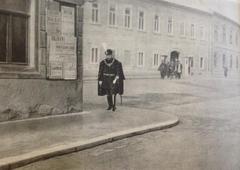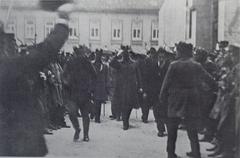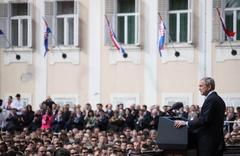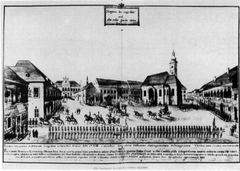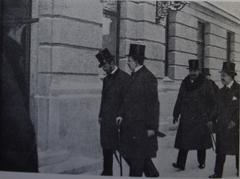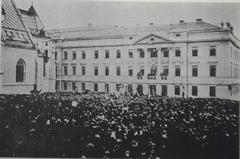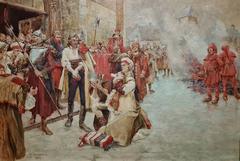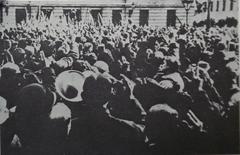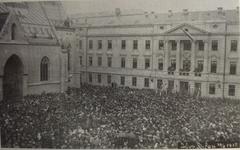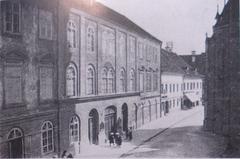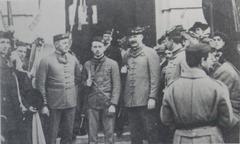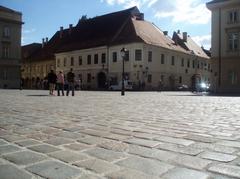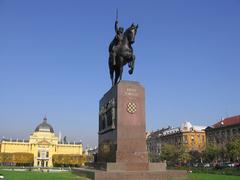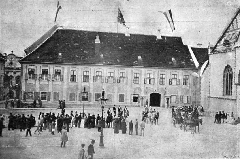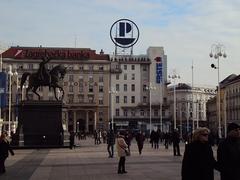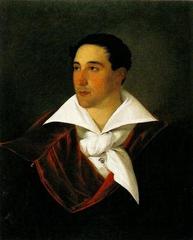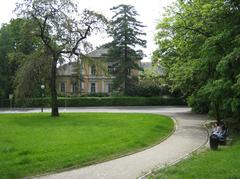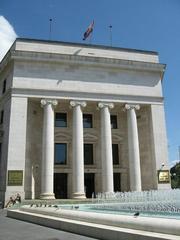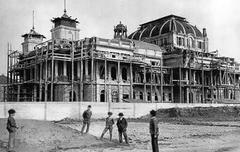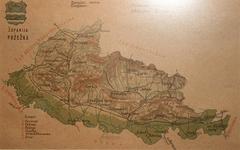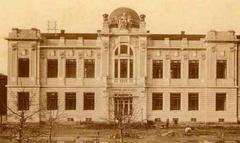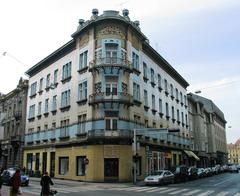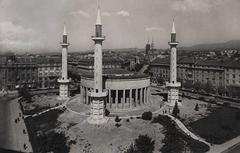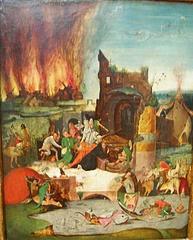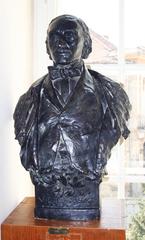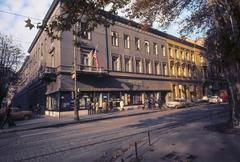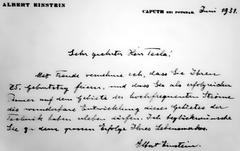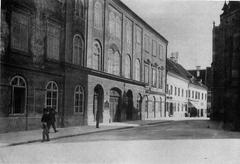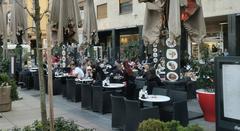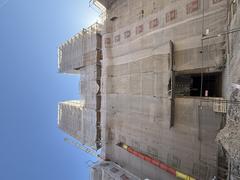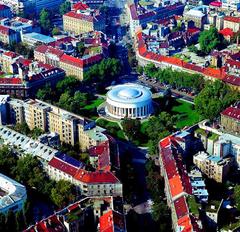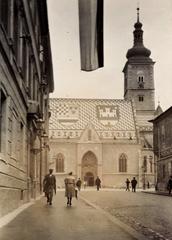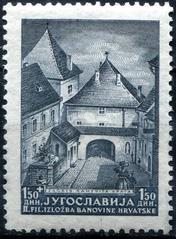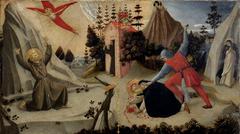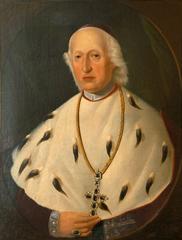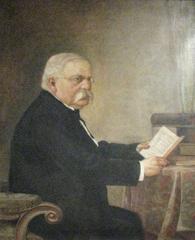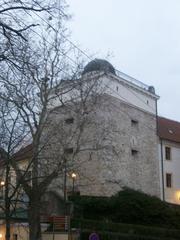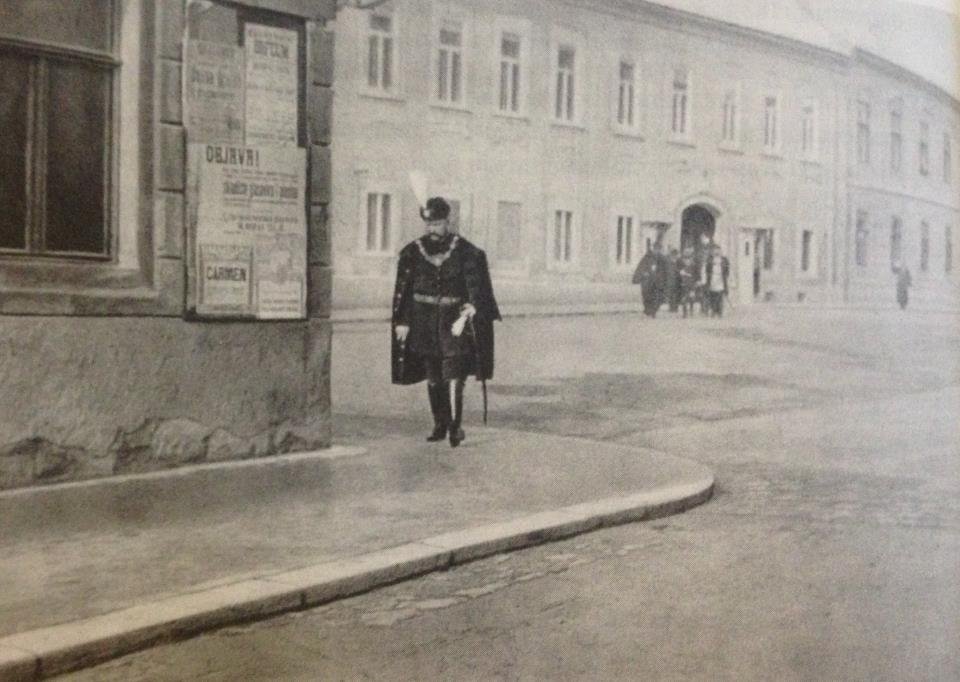
St. Mark’s Square Zagreb: Complete Guide to Visiting Hours, Tickets, and Historical Sites
Date: 14/06/2025
Introduction
St. Mark’s Square (Trg Svetog Marka) in Zagreb stands as a vibrant testament to Croatia’s rich medieval heritage, political evolution, and cultural life. Located in the historic Upper Town (Gornji Grad), the square has evolved from its 13th-century origins into the city’s political and cultural heart. Anchored by the iconic St. Mark’s Church—with its famed multicolored tiled roof—St. Mark’s Square is surrounded by significant governmental and historical buildings, reflecting the enduring importance of this space in Croatia’s national identity. Whether you seek history, architecture, or a taste of local tradition, St. Mark’s Square offers an unmissable window into Zagreb’s soul (radiozagreb.com, infozagreb.hr, eupedia.com).
Table of Contents
- Medieval Origins and Early Development
- Architectural Evolution Through the Centuries
- Political Significance and National Identity
- Cultural Life and Major Events
- Visiting Hours, Tickets, and Accessibility
- Practical Travel Tips
- Nearby Attractions
- Frequently Asked Questions (FAQ)
- References
Medieval Origins and Early Development
St. Mark’s Square lies at the heart of Zagreb’s Upper Town, an area that traces its roots back to the Middle Ages. The square’s history is closely linked to the emergence of Gradec and Kaptol—two medieval settlements that formed the foundation of modern Zagreb. By the 13th century, Gradec had become the civic nucleus, with St. Mark’s Square serving as its central gathering place (radiozagreb.com).
St. Mark’s Church, the square’s focal point, was constructed in the 13th century, making it one of the oldest structures in the city. Its original Romanesque features are visible in the foundational elements, while later Gothic reconstruction in the 14th century contributed to its distinctive look. The square itself was always a hub for both religious and civic life.
Architectural Evolution Through the Centuries
St. Mark’s Square is a showcase of Zagreb’s architectural heritage. The most striking feature is St. Mark’s Church, with its blend of Romanesque and Gothic styles. The church’s south portal—crafted by the Parler family workshop from Prague—features 15 intricately carved statues in 11 niches, marking it as one of Croatia’s finest Gothic portals (infozagreb.hr, Wikipedia).
The church’s multicolored tiled roof, added in 1880, displays the coats of arms of Croatia, Dalmatia, Slavonia, and Zagreb, symbolizing Croatian unity (EuropeUpClose, CroatiaWeek).
Surrounding the church are key political buildings:
- Banski dvori: The Baroque palace housing the Croatian Government.
- Sabor Palace: The neoclassical seat of the Croatian Parliament.
- Constitutional Court: Completing the trio of national governance (Spotted by Locals).
The square’s layout preserves its medieval atmosphere, with cobblestone streets and nearby remnants of the old city walls, such as the Stone Gate (The Crazy Tourist).
Political Significance and National Identity
St. Mark’s Square is the epicenter of Croatia’s political life. It is bordered by the nation’s most important institutions: the Croatian Parliament (Sabor), Banski dvori (Prime Minister’s residence), and the Constitutional Court. These buildings have witnessed pivotal events, including the Croatian Parliament’s declaration of independence from Yugoslavia on October 8, 1991 (radiozagreb.com).
Annual ceremonies, state visits, and public demonstrations continue to reinforce the square’s role as a symbol of Croatian sovereignty and democracy.
Cultural Life and Major Events
St. Mark’s Square serves not only as a political center but also as a cultural hub. Throughout the year, it hosts concerts, folk dance performances, and festivals, most notably during Advent when festive lights and decorations transform the square. The changing of the guard ceremony, held on weekends and holidays from late April to October, adds a traditional touch and draws many photographers (Frank About Croatia).
Nearby museums, such as the Museum of Broken Relationships and the Croatian Museum of Naïve Art, further enrich the visitor experience (Wikipedia).
Visiting Hours, Tickets, and Accessibility
- Square Access: St. Mark’s Square is open to the public 24/7. Temporary restrictions may apply during official events or heightened security.
- St. Mark’s Church: The church interior is generally accessible only during Mass (mainly Sundays and religious holidays) and occasional special events. Check official sources for current hours (infozagreb.hr).
- Tickets: No tickets are required for the square or viewing the church exterior. Guided tours may charge fees, usually 10–20 EUR.
- Accessibility: The square is paved with cobblestones and accessed via uphill streets. While generally accessible, wheelchair users may require assistance due to uneven surfaces. There are no dedicated accessible restrooms on the square; nearby cafes may offer limited facilities (Travel Hotel Expert).
Practical Travel Tips
- Getting There: Walk from Ban Jelačić Square (10–15 minutes uphill) or use the historic funicular to reach Upper Town (Nomadic Matt).
- Best Visiting Times: Spring and early autumn offer pleasant weather and smaller crowds. Early mornings and late afternoons provide optimal light for photography.
- Guided Tours: Free and paid walking tours depart from the city center daily (Notions on Tour).
- Safety: The area is safe, with regular police presence due to government buildings. Respect security zones and avoid taking photos of security personnel.
- Dress Code: Modest attire is recommended when entering the church or during ceremonies.
- Currency & Language: Croatia uses the euro (EUR); English is widely spoken in tourist areas.
Nearby Attractions
St. Mark’s Square is ideally situated for exploring other Zagreb highlights:
- Stone Gate (Kamenita Vrata): The last surviving medieval gate, now a shrine.
- Lotrščak Tower: Offers panoramic city views and the daily noon cannon tradition.
- Museum of Broken Relationships: An award-winning museum just steps away.
- Dolac Market: Zagreb’s main open-air market, offering local produce.
- Tkalčićeva Street: A lively pedestrian street with dining and nightlife options.
Frequently Asked Questions (FAQ)
Q: Are tickets required for St. Mark’s Square or church?
A: No, the square is free to enter. The church is open during Mass; no tickets required.
Q: What are the visiting hours for St. Mark’s Church?
A: Generally open during Mass (Sundays, holidays). Check local schedules for special openings.
Q: Are guided tours available?
A: Yes, both free and paid tours cover St. Mark’s Square and Upper Town.
Q: Is St. Mark’s Square accessible for wheelchair users?
A: The square is accessible but cobblestones and slopes may require assistance.
Q: When does the Changing of the Guard ceremony take place?
A: Weekends and holidays, late April to October.
References and Official Links
- Radio Zagreb: Explore St. Mark’s Square
- Zagreb Tourist Board: St. Mark’s Church
- Wikipedia: St. Mark’s Church, Zagreb
- Eupedia: Zagreb Guide
- Frank About Croatia: Zagreb
- Nomadic Matt: Zagreb Travel Guide
- Like a Local Guide: St. Mark’s Square
- Travel Hotel Expert: Where to Stay in Zagreb
Conclusion
St. Mark’s Square stands as a living monument to Zagreb’s layered history, national identity, and cultural vibrancy. Free to visit and centrally located, it is a must-see for anyone exploring Croatia’s capital. Plan your visit with up-to-date information from official sources, enjoy guided tours for deeper insights, and take time to explore the nearby historic and cultural attractions. For even more travel tips and audio guides, download the Audiala app or follow local tourism channels.
Enjoy your journey through Zagreb’s most iconic square!
